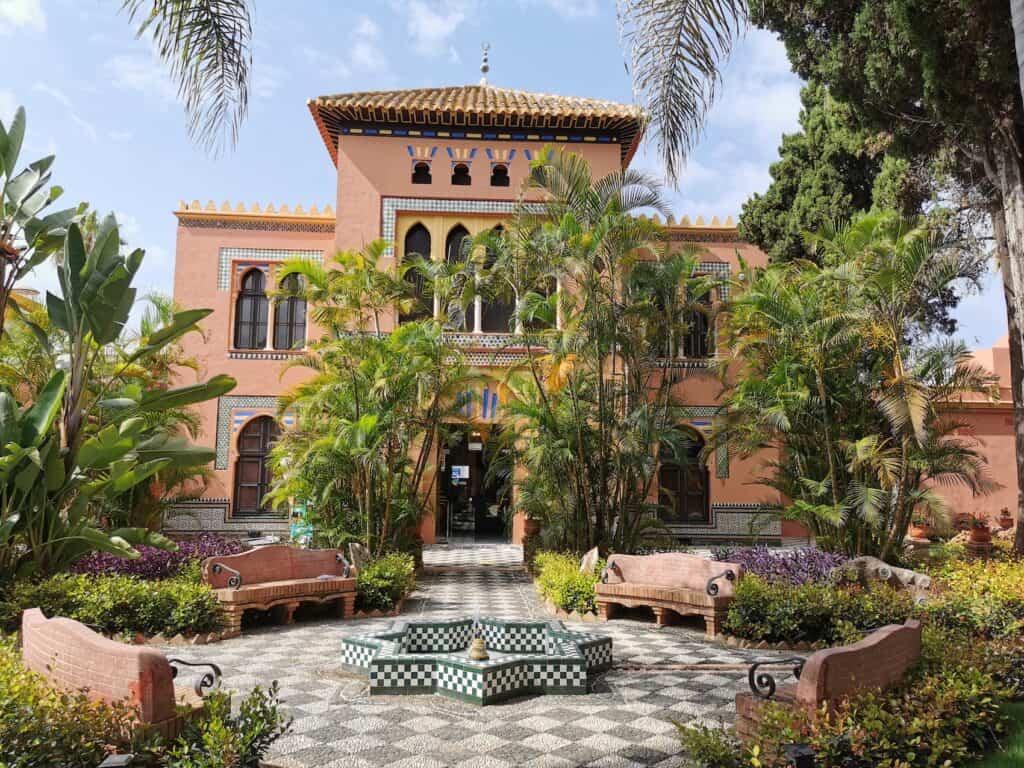- Home
- Listings
- Things To See & Do
- Car Hire
- News
- Properties
- What’s On
ES
The Palace of La Najarra
The Palace of La Najarra: A Treasure of Almuñécar
Located in Almuñécar, between San Cristóbal Beach and El Majuelo Park, the Palace of La Najarra or Palacete de la Najarra is a building of great historical and architectural value. Built in 1840, its neo-Arabic style is inspired by the tradition of Arabic garden houses, a legacy of the Moorish influence in the region. Today, the palacete remains a place of cultural interest for the city’s visitors.
A Building Full of History
The Palace of La Najarra was constructed in the mid-19th century on the site of an old Arabic house, alongside a now-demolished sugar factory. It was commissioned by Doña Encarnación Márquez y González de Mendoza Merchante to Don José Rubio Osorio. The construction followed Arabic architectural traditions, with the help of Moroccan masons, ceramists, and painters brought from Tetuán, which explains the presence of frescoes and details that reflect daily life in that city.
Style and Design of the Palace

The building has a rectangular shape, with two floors and two elevated side sections that mimic towers, covered with four-pitched roofs. The main façade faces the garden and features a large central access opening with a horseshoe arch. Above this is a small lookout. The interior décor is typical of the Andalusian style, with tile skirting boards and wooden ceilings with colorful coffered designs. The walls feature frescoes and mocárabe details, evoking the art and architecture of the Alhambra.
The Palace's Garden

The garden of the Palace of La Najarra is one of its main attractions. It is carefully designed, with a variety of plants, including cypress trees, palm trees, olive trees, loquats, bougainvillea, and tropical plants like coffee trees. At the center of the garden is an Arabic-style fountain, surrounded by benches where visitors can relax and enjoy the beauty of the place. Also notable is a small house of a different style, known as the “children’s house,” built in 1939, which adds a special touch to the property. Additionally, fossils and desert rocks are scattered throughout the garden.
The Palacete Today

Currently, the Palace of La Najarra houses the Patronato Municipal de Turismo (Municipal Tourism Board) and the Oficina Municipal de Información Turística (Municipal Tourist Information Office) of Almuñécar. While only the ground floor, which contains the tourist office, is open to the public, the garden remains an active cultural space, hosting exhibitions, concerts, and other events throughout the year. Access to the palacete is through a side entrance, opened with the opening of Avenida de Europa.
How to Visit the Palacete de la Najarra
The Palacete de la Najarra is located at the end of Avenida de Europa, towards San Cristóbal Beach. Admission is free, making it an excellent option for visitors to Almuñécar. Opening hours vary by season:
Summer (July 1 – September 15): Open daily from 09:30 to 13:30 and from 18:30 to 21:00.
Autumn and Spring (September 16 – October 30 / April 1 – June 30): Open daily from 09:30 to 13:30 and from 17:00 to 19:30.
Winter (November 1 – March 31): Open daily from 09:30 to 13:30 and from 16:30 to 19:00.
